-
Flying video camera will protect soldiers
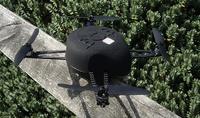
Engineers have developed the U.K.’s first lightweight outdoor flying video camera which can fit in a soldier’s backpack; the UAV is designed to help spot hidden dangers and feed the real-time footage to goggles worn by the operator
-
-
New first response, military tool: surveillance insects

Micro air vehicles (MAVs) are tiny, insect-size UAVs used for search-and-rescue operations, surveillance, monitoring of hazardous environments, and detection of explosives; University of Michigan researchers had an idea: rather than build insect-size UAVs, why not use the insects themselves to fly these missions?
-
-
Enhancing communication of swarming robots
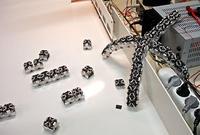
With the help of computer simulations and prototypes, researchers are striving to enhance the communication in human and multi-robot interactions
-
-
"Swarm" UAV reconnaissance demonstrated
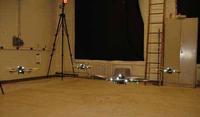
Boeing successfully demonstrated autonomous communications and operation of dissimilar unmanned aerial vehicles (UAV) in flight tests over the rugged terrain of eastern Oregon; swarm technology is similar to how insects communicate and perform tasks as an intelligent group; the UAVs worked together to search the test area through self-generating waypoints and terrain mapping, while simultaneously sending information to teams on the ground
-
-
Lockheed Martin shows tiny surveillance UAV
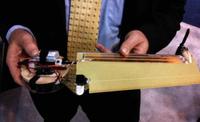
The Samarai UAV is sixteen inches long and weighs less than half a pound; while flying, it can stream live video from a camera that rotated around its center providing a 360 degree view without a gimbal; it can be carried in a backpack and launchedt from the ground or like a boomerang
-
-
Beachball-like observation UAV developed
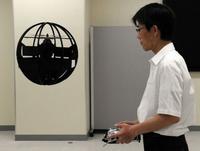
A beach ball-size drone can fly down narrow alleys, hover on the spot, take off vertically, bounce along the ground like a soccer ball — all the time transmitting live images from a video camera; it can travel above traffic or spy on a target through a window — and can also be used in search and rescue in disaster zones, where it could fly through buildings and even up and down stairways
-
-
Filipino man guilty of selling UAV on eBay
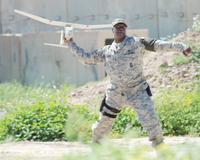
Last week a Filipino man pleaded guilty to violating arms export and smuggling laws by selling parts from an unmanned aerial vehicle (UAV) on eBay; in February, DHS officials arrested Henson Chua of Manila, Philippines after he shipped undercover agents a three-foot long, hand-launched, computer-controlled RQ-11A/B Raven surveillance drone
-
-
Tiny flying machines revolutionize surveillance work
Tiny aerial vehicles are being developed with innovative flapping wings based on those of real-life insects; incorporating micro-cameras, these revolutionary insect-size vehicles will be suitable for many different purposes ranging from helping in emergency situations considered too dangerous for people to enter, to covert military surveillance missions
-
-
Micro-robots emulate water-striding insects
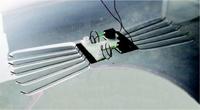
Researchers are working on building nimble micro-robots that are able to skim across the surface of water; the prototype devices emulate water-striding insects such as mosquitoes and water spiders, and could be used for military spy missions, water-pollution monitoring, and other applications
-
-
The world’s first "printed" aircraft flies
Engineers have designed and flown the world’s first “printed” aircraft, which could revolutionize the economics of aircraft design; the plane is a UAV whose entire structure has been printed, including wings, integral control surfaces, and access hatches; it was printed on an EOS EOSINT P730 nylon laser sintering machine, which fabricates plastic or metal objects, building up the item layer by layer
-
-
Texas A&M launches a blimp program
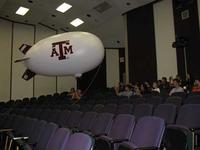
Texas A&M is launching a new airship program to develop lighter-than-air (LTA) blimps; LTA systems generate lift force by using sufficient volume of a lighter-than-air gas, such as helium; heavier-than-air (HTA) systems, on the other hand, generate lift by a relative motion between the wings or rotor blades and ambient air; airships can contribute to a number of missions including disaster response, homeland security, and communications relay
-
-
Expanding Yuma flight testing schedule for Argus UAV
The World Surveillance Group (WSGI) revealed its plans of extending the flight testing schedule for its strange-looking Argus One UAV at the Yuma facilities at the U.S Army grounds in Arizona
-
-
Texas gets second UAV
Border agents in south Texas will be getting additional help thanks to the deployment of a second unmanned aerial vehicle (UAV) in the area; currently there are four UAVs deployed along the U.S.-Mexico border and three of them are based in Arizona; the second drone is expected to arrive later this year or in the early part of next year.
-
-
Satellites could predict next cholera outbreak
With cholera making an unlikely resurgence, catching countries like Haiti and Pakistan by surprise, public health officials are exploring the potential for new technology to help stem the spread of future outbreaks; each year the disease affects three to five million people and claims more than 100,000 lives; researchers believe that satellite images of oceans could help forecast when a cholera outbreak is likely to strike
-
-
Pentagon: Global Hawk Drone “not operationally effective”
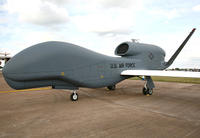
The Pentagon has declared the latest Northrop Grumman Global Hawk drone “not operationally effective”; according to a report by the Pentagon’s weapon testers, the RQ-4B Global Hawk Block 30 could only provide 40 percent of the coverage requested; “Mission-critical components fail at high rates, resulting in poor takeoff reliability, high air abort rates, low mission capable rates, an excessive demand for critical spare parts and a high demand for maintenance support”; Pentagon officials declined to discuss the drone in too much detail but did say that they were working with Northrop Grumman to make improvements to the drone; defense officials have scheduled a production meeting for this month to discuss the program
-
- All
- Regional
- Water
- Biometrics
- Borders/Immig
- Business
- Cybersecurity
- Detection
- Disasters
- Government
- Infrastructure
- International
- Public health
- Public Safety
- Communication interoperabillity
- Emergency services
- Emergency medical services
- Fire
- First response
- IEDs
- Law Enforcement
- Law Enforcement Technology
- Military technology
- Nonlethal weapons
- Nuclear weapons
- Personal protection equipment
- Police
- Notification /alert systems
- Situational awareness
- Weapons systems
- Sci-Tech
- Sector Reports
- Surveillance
- Transportation
Advertising & Marketing: advertise@newswirepubs.com
Editorial: editor@newswirepubs.com
General: info@newswirepubs.com
2010-2011 © News Wire Publications, LLC News Wire Publications, LLC
220 Old Country Road | Suite 200 | Mineola | New York | 11501
Permissions and Policies
Editorial: editor@newswirepubs.com
General: info@newswirepubs.com
2010-2011 © News Wire Publications, LLC News Wire Publications, LLC
220 Old Country Road | Suite 200 | Mineola | New York | 11501
Permissions and Policies
